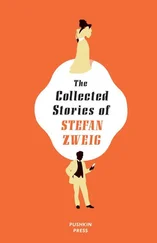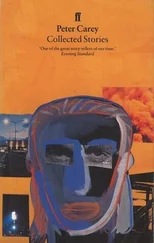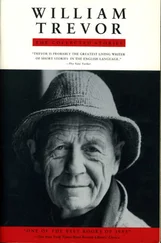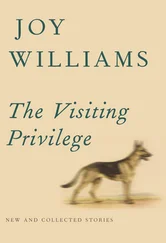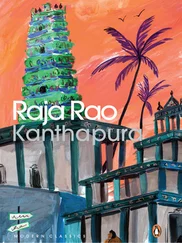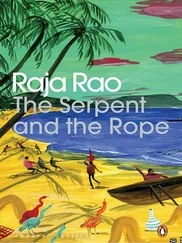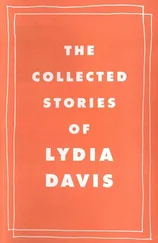Raja Rao - Collected Stories
Здесь есть возможность читать онлайн «Raja Rao - Collected Stories» весь текст электронной книги совершенно бесплатно (целиком полную версию без сокращений). В некоторых случаях можно слушать аудио, скачать через торрент в формате fb2 и присутствует краткое содержание. Год выпуска: 2014, Издательство: Penguin, Жанр: Классическая проза, на английском языке. Описание произведения, (предисловие) а так же отзывы посетителей доступны на портале библиотеки ЛибКат.
- Название:Collected Stories
- Автор:
- Издательство:Penguin
- Жанр:
- Год:2014
- ISBN:нет данных
- Рейтинг книги:5 / 5. Голосов: 1
-
Избранное:Добавить в избранное
- Отзывы:
-
Ваша оценка:
- 100
- 1
- 2
- 3
- 4
- 5
Collected Stories: краткое содержание, описание и аннотация
Предлагаем к чтению аннотацию, описание, краткое содержание или предисловие (зависит от того, что написал сам автор книги «Collected Stories»). Если вы не нашли необходимую информацию о книге — напишите в комментариях, мы постараемся отыскать её.
Collected Stories — читать онлайн бесплатно полную книгу (весь текст) целиком
Ниже представлен текст книги, разбитый по страницам. Система сохранения места последней прочитанной страницы, позволяет с удобством читать онлайн бесплатно книгу «Collected Stories», без необходимости каждый раз заново искать на чём Вы остановились. Поставьте закладку, и сможете в любой момент перейти на страницу, на которой закончили чтение.
Интервал:
Закладка:
The preface to Kanthapura is again a criticism not only of the language of the middle class but also of its ethnic identity and culture, which are fragmented. This is characteristic of societies under exploitative colonial regimes. The condition gives rise to social protest. In Kanthapura , under the influence of Gandhi, social protest becomes, on the one hand, a movement to reform the inegalitarian Indian society and, on the other, a movement to end British colonialism. The protest manifests itself as the expression of a critical attitude towards existing institutions and their underlying ethos. Social protest may be initiated by an individual or a community. Individuals, especially charismatic leaders such as Gandhi, play a decisive role in expressing social protest and mobilizing collective support for it.
Space within an Indian village is cut up and allocated to the different castes. Social relationships are interpersonal but hierarchical, with the Brahmin and the pariah at the opposite ends of the spectrum. Into this world steps a young Brahmin, Moorthy, who is educated in the town and is therefore considered modern. He is a figure of authority because he combines in himself upper-caste status and a college education. He is also a Gandhian and committed, like Gandhi, to ending British rule as well as the inequalities within Indian society such as untouchability and the oppression of women. The Gandhian movement was based on satyagraha (‘firmness in truth’). Gandhi added an ethical dimension to what was basically a social and political movement. The Gandhian bias is obvious: moral revolution takes precedence over social and political revolutions. It is significant that Moorthy enters the Untouchable’s house in his own village first, before his imprisonment as a revolutionary. While the inspiration of the novel is moral and humanistic, its idiom is spiritual and religious. Stress is laid on such values as righteousness, love, non-violence and on ritual beliefs and practices.
Kanthapura is one long, oral tale told in retrospect. There are other tales, interspersed with the main narrative, that begin with the oral tags, ‘Once upon a time’ and ‘And this is how it all began’, but these are usually digressions. Other characteristics of the oral narrative include the use of songs and prayers, proverbs, mythology, and epic lists and catalogues. In fact, the novel is unthinkable without the oral tradition. The preface itself defines Kanthapura as an oral— not a written — text.
It may have been told of an evening, when as the dusk falls, and through the sudden quiet, lights leap up in house after house, and stretching her bedding on the veranda, a grandmother might have told you, newcomer, the sad tale of her village. (1963: viii)
It is within the frame of Kannada that the tale is told. English is made to simulate the ‘thought-movement’ and idiom of the old woman Achakka, who is the narrator. One detects here the notion of linguistic relativity associated with the Sapir — Whorf hypothesis that one’s conceptualization of the world is partly the product of the form of the language habitually used to describe it and talk about it. Rao’s use of English suggests the appropriation of the structural characteristics of Kannada, as Janet Powers Gemmill shows. 11Consider the opening sentence as an example of syntactic re-creation:
High on the Ghats is it, high up the steep mountains that face the cool Arabian seas, up the Malabar coast is it, up Mangalore and Puttur and many a centre of cardamom and coffee, rice and sugarcane. (1963: 1)
Gemmill has this translated into Kannada and again retranslated into English as follows:
Upon ghats upon is it, upon steep mountain(s) upon, cool Arabian sea to face making mountain upon, Malabar coast upon is it, Mangalore, Puttur and many cardamom, coffee, rice, sugarcane centre(s) upon is. 12
The similarity in the word order is unmistakable, especially the reversal of the word order of subject and verb, and the omission of the verb in the second clause. The deviation is of course kept within the bounds of intelligibility. The embedding of Kannada structure in English is done with such finesse as to be almost unnoticeable.
Parataxis and simple coordination are syntactic features that generally characterize the oral narrative. They dominate Kanthapura . One example will suffice — the celebrated description of the Kartik festival.
Kartik has come to Kanthapura, sisters — Kartik has come with the glow of lights and the unpressed footsteps of the wandering gods. . and gods walked by lighted streets, blue gods and quiet gods and bright-eyed gods, and even as they walk in transparent flesh the dust gently sinks back to the earth, and many a child in Kanthapura sits late into the night to see the crown of this god and that god, and how many a god has chariots with steeds white as foam and queens so bright that the eyes shut themselves in fear lest they be blinded. (1963: 81)
Idioms are a fertile area for nativization, and here, Rao both transplants from Kannada and implants new ones; e.g., ‘To stitch up one’s mouth’ (1963: 58); ‘to tie one’s daughter to the neck of’ (1963: 35); ‘a crow-and-sparrow story’ (1963: 15) (from ‘a cock-andbull story’); and ‘every squirrel has his day’ (1963: 77) (from ‘every dog has his day’).
Adjuncts are frequently used in oral narratives for highlighting a word or phrase; e.g., ‘And the Swami, who is he?’ (1963: 41); ‘[M]y heart, it beat like a drum’ (1963: 182); ‘She has never failed us, I assure you, our Kenchamma’ (1963: 2); and ‘Our village — Kanthapura is its name’ (1963: 1).
In an Indian village, relationships are interpersonal. Social stratification is along the lines of caste and occupation. Often, idiosyncrasies and physical disabilities attach themselves as sobriquets to the names of individuals. Examples of these abound in the novel: Patel Rangè Gowda, Pariah Sidda, Post-office Suryanarayana, Husking Rangi, Four-beamed-house Chandrasekharayya, One-eyed Linga, and Waterfall Venkamma.
On ceremonial occasions, social relationships are meticulously observed. In a traditional society, certain aspects of conversation are ritualized. Elaborate attention is paid, for example, to modes of address. They reflect the use of language as a means of establishing a friendly rapport between speaker and listener and of reinforcing communal solidarity. For instance, in a host — guest interactional situation, Rao hits upon the exact phrase translated from Kannada to dispel any uneasiness. The guest is coaxed: ‘Take it Bhattarè, only one cup more, just one? Let us not dissatisfy our manes’ (1963: 21). On the anniversary of a death in a Brahmin family, other Brahmins are invited to a feast, and they are expected to indulge their appetites fully, so that the spirits of the dead are pacified. C.D. Narasimhaiah remarks: ‘With a people like us, used to being coaxed, the English form, “Won’t you have a second helping?”, or the mere “Sure you don’t care for more?” will be ineffective, and even considered discourteous.’ 13Culture-sensitive situations like these are not always understood.
Through a choice of strategies, skilfully deployed, Rao has been able to reconstruct the performance-oriented discourse of the traditional oral tales of India. Kanthapura is village India in microcosm — the context that has determined and shaped the expressive devices in the novel.
Rao considers his entire work as:
An attempt at puranic recreation of Indian storytelling: that is to say, the story, as story, is conveyed through a thin thread to which are attached (or which passes through) many other stories, fables, and philosophical disquisitions, like a mala (garland). 14
Philosophical debates are a part of both the Upanishads and the puranas. The Serpent and the Rope resembles both. The novel interprets Vedanta in terms of the discourse of fiction. The philosophy is not an interpolation. It is an integral part of the novel, its informing principle.
Читать дальшеИнтервал:
Закладка:
Похожие книги на «Collected Stories»
Представляем Вашему вниманию похожие книги на «Collected Stories» списком для выбора. Мы отобрали схожую по названию и смыслу литературу в надежде предоставить читателям больше вариантов отыскать новые, интересные, ещё непрочитанные произведения.
Обсуждение, отзывы о книге «Collected Stories» и просто собственные мнения читателей. Оставьте ваши комментарии, напишите, что Вы думаете о произведении, его смысле или главных героях. Укажите что конкретно понравилось, а что нет, и почему Вы так считаете.

